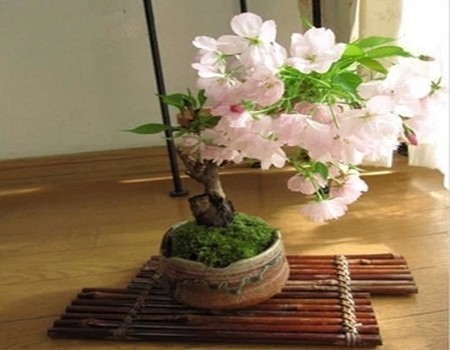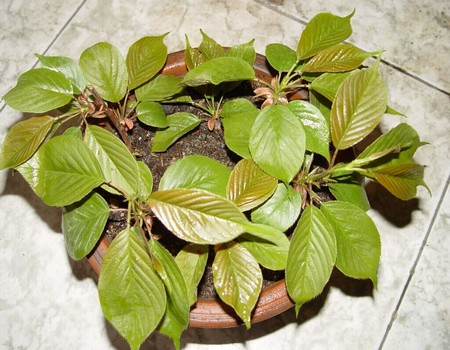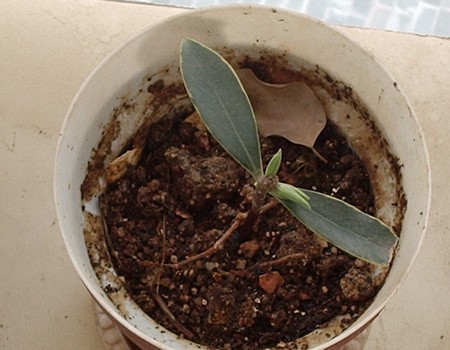Propagation technique of Japanese late Sakura
When it comes to cherry blossoms, perhaps most people think of cherry blossoms that can be seen everywhere in spring in Japan. But few people know that cherry blossoms are divided into early cherry and evening cherry. Morning Sakura charming and charming, after a short period of brilliant then withered, the achievement of a "magnificent" life. But the evening cherry flowers are heavy, graceful and have a long flowering period, which can not be compared with the early cherry. Now it has been widely used in gardens and urban greening. Next, the editor will explain to you the breeding techniques of Japanese cherry.

There are many horticultural varieties of this tree species, the double pink variety is the top grade, its seeds are very few, and it is difficult to take root with branch cuttings, so the propagation coefficient is small, which limits its application in the garden. Previous studies have not made a breakthrough in improving the reproduction coefficient of Japanese evening cherry. The reason why the cutting of Prunus is difficult to take root may be related to the accumulation of inert substances in dormant branches. In order to explore the suitable method of Japanese late cherry propagation, the non-test tube rapid propagation technique was used for rapid propagation.
Japanese late cherry is mainly propagated by grafting, and it can also be propagated by pressing and cutting, but the survival rate is low. Grafting mainly uses cherry, mountain cherry blossom and peach, apricot and other seedlings as rootstocks, using bud grafting and branch grafting. Branch grafting is usually carried out before sprouting in March in spring, and the survival rate is the highest by splicing method.
Breeding techniques of Japanese evening cherry:
It is better to use expanded vermiculite in the selection of seedbed soil. Vermiculite nursery bed has the advantages of small temperature difference between day and night, large accumulated temperature and good heat preservation effect, which is beneficial to root growth. Then choose the 15 cm-long branches on the robust mother tree, with current year's new shoots at the top and annual branches at the bottom as cuttings. The survival rate of cuttings is the highest in the blooming stage.
Spread 2 to 3 centimeters of river sand at the bottom of the seedling bed made of bricks, and then fill it with vermiculite 15 centimeters thick. Install a centrifugal sprinkler every 1 meter, shade properly when the weather turns hot, and often spray water to ensure humidity. Branches can be used as a fence around the wind, inserted into rows of vermiculite vermiculite, plant spacing of 2 cm, row spacing of 4 cm, after the insertion of water. The cutting depth is 6 to 8 cm.
Management of Japanese evening Sakura:
After cutting, it is necessary to strengthen the management of water and fertilizer in the field and apply acid fertilizer reasonably to ensure a good drainage system. The prevention of diseases and insect pests is given priority to, supplemented by chemical control.
The common pests harming Japanese late cherry are: tea wing bug, peach aphid, carrot microtube aphid, apple yellow aphid, Japanese woolly scale, wisteria gray powder scale and so on. If it occurs, 3000 times of 3% hyperosmotic phenoxyvir EC can be used to kill tea wing bugs, and 2000 times of imidacloprid wettable particles can be used to kill peach aphids, carrot microtube aphids and apple aphids.
Time: 2019-06-11 Click:
- Prev

Cutting Seedling raising technique of Japanese late Sakura at full flowering stage
Cherry blossoms are colorful and magnificent. They are important ornamental trees in gardens. They should be planted in front of gardens or buildings. They can also be used as street trees on paths. Japanese late cherry blossoms are excellent varieties of cherry blossoms because of their large, double, bright color, fragrant smell and long flowering period. The propagation of Japanese late cherry seedlings by grafting is slow and tedious to operate.
- Next

Cutting method of Phnom Penh Daphne odora
Some flower lovers use indolebutyric acid when cutting and propagating Phnom Penh incense. After more than a month, although some cuttings can sprout and spread leaves, they will not survive after a period of time. Even if they are replaced with new soil, they will eventually be wiped out, and there are three main reasons for cutting failure.
Related
- Fuxing push coffee new agricultural production and marketing class: lack of small-scale processing plants
- Jujube rice field leisure farm deep ploughing Yilan for five years to create a space for organic food and play
- Nongyu Farm-A trial of organic papaya for brave women with advanced technology
- Four points for attention in the prevention and control of diseases and insect pests of edible fungi
- How to add nutrient solution to Edible Fungi
- Is there any good way to control edible fungus mites?
- Open Inoculation Technology of Edible Fungi
- Is there any clever way to use fertilizer for edible fungus in winter?
- What agents are used to kill the pathogens of edible fungi in the mushroom shed?
- Rapid drying of Edible Fungi

